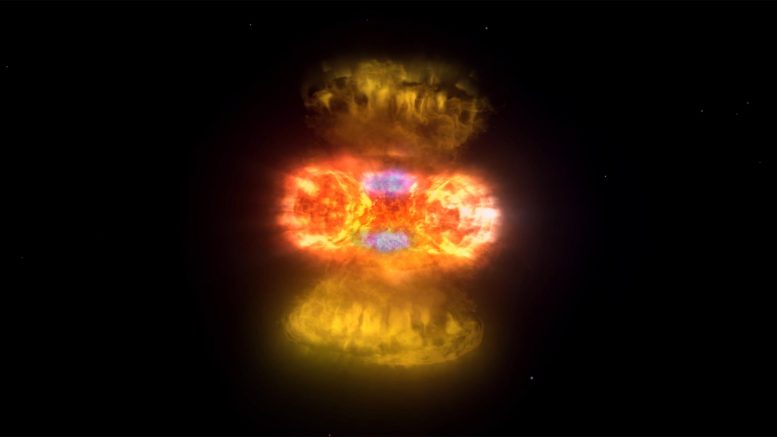
V906 Carinae’s 2018 nova eruption illustration. Credit: NASA’s Goddard Space Flight Center/Chris Smith (USRA)
Unprecedented observations of a nova outburst in 2018 by a trio of satellites, including two NASA missions, have captured the first direct evidence that most of the explosion’s visible light arose from shock waves — abrupt changes of pressure and temperature formed in the explosion debris.
A nova is a sudden, short-lived brightening of an otherwise inconspicuous star. It occurs when a stream of hydrogen from a companion star flows onto the surface of a white dwarf, a compact stellar cinder not much larger than Earth. NASA’s Fermi and NuSTAR space telescopes, together with the Canadian BRITE-Toronto satellite and several ground-based facilities, studied the nova.
“Thanks to an especially bright nova and a lucky break, we were able to gather the best-ever visible and gamma-ray observations of a nova to date,” said Elias Aydi, an astronomer at Michigan State University in East Lansing who led an international team from 40 institutions. “The exceptional quality of our data allowed us to distinguish simultaneous flares in both optical and gamma-ray light, which provides smoking-gun evidence that shock waves play a major role in powering some stellar explosions.”
The 2018 outburst originated from a star system later dubbed V906 Carinae, which lies about 13,000 light-years away in the constellation Carina. Over time — perhaps tens of thousands of years for a so-called classical nova-like V906 Carinae — the white dwarf’s deepening hydrogen layer reaches critical temperatures and pressures. It then erupts in a runaway reaction that blows off all of the accumulated material.
Each nova explosion releases a total of 10,000 to 100,000 times the annual energy output of our Sun. Astronomers discover about 10 novae each year in our galaxy.
Fermi detected its first nova in 2010 and has observed 14 to date. Although X-ray and radio studies had shown the presence of shock waves in nova debris in the weeks after the explosions reached peak brightness, the Fermi discovery came as a surprise.
Gamma rays — the highest-energy form of light — require processes that accelerate subatomic particles to extreme energies. When these particles interact with each other and with other matter, they produce gamma rays. But astronomers hadn’t expected novae to be powerful enough to produce the required degree of acceleration.
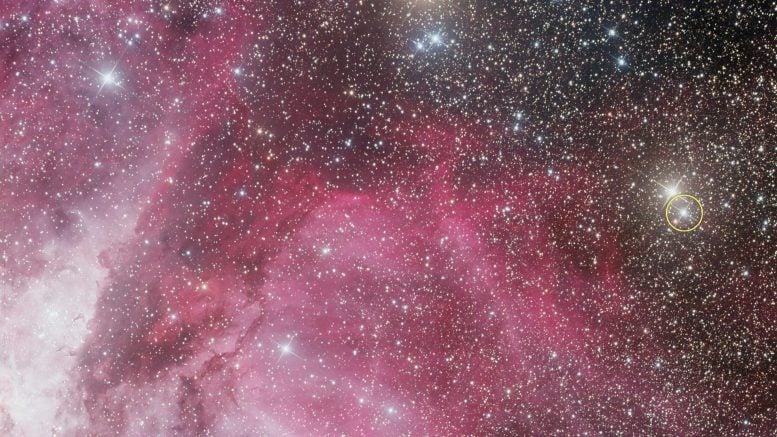
V906 Carinae (circled) shines near peak brightness in this image taken on March 23, 2018, three days after the nova was discovered. The beautiful cloud of gas and dust dominating the picture is part of the Carina Nebula. Credit: Copyright 2018 by A. Maury and J. Fabrega, used with permission
Because the gamma rays appear at about the same time as the peak in visible light, astronomers concluded that shock waves play a more fundamental role in the explosion and its aftermath.
In 2015, a paper led by Brian Metzger at Columbia University in New York showed how comparing Fermi gamma-ray data with optical observations would allow scientists to learn more about nova shock waves. In 2017, a study led by Kwon-Lok Li at Michigan State found that the overall gamma-ray and visible emissions rose and fell in step in a nova known as V5856 Sagittarii. This implied shock waves produced more of the eruption’s light than the white dwarf itself.
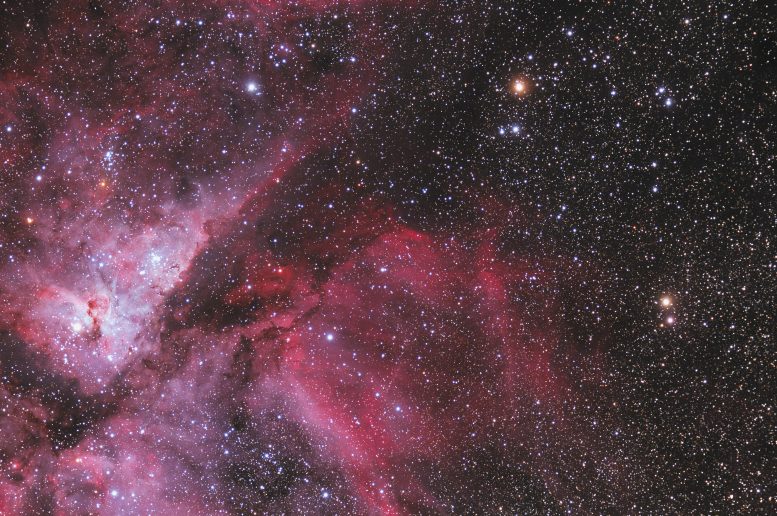
Nova Carinae 2018, now designated V906 Carinae, was a thermonuclear explosion on a white dwarf in a star system about 13,000 light-years away. This image shows the nova on April 7, about 18 days after its discovery and near its peak brightness. Credit: Copyright 2018 by W. Paech + F. Hofmann, Team Chamaeleon, Chamaeleon, and Onjala Observatory, Namibia, used with permission.
The new observations from V906 Carinae, presented in a paper led by Aydi and published on Monday, April 13, in Nature Astronomy, spectacularly confirm this conclusion.
On March 20, 2018, the All-Sky Automated Survey for Supernovae, a set of two dozen robotic telescopes distributed around the globe and operated by Ohio State University, discovered the nova. By month’s end, V906 Carinae was dimly visible to the naked eye.
Fortuitously, a satellite called BRITE-Toronto was already studying the nova’s patch of sky. This miniature spacecraft is one of five 7.9-inch (20-centimeter) cubic nanosatellites comprising the Bright Target Explorer (BRITE) Constellation. Operated by a consortium of universities from Canada, Austria, and Poland, the BRITE satellites study the structure and evolution of bright stars and observe how they interact with their environments.
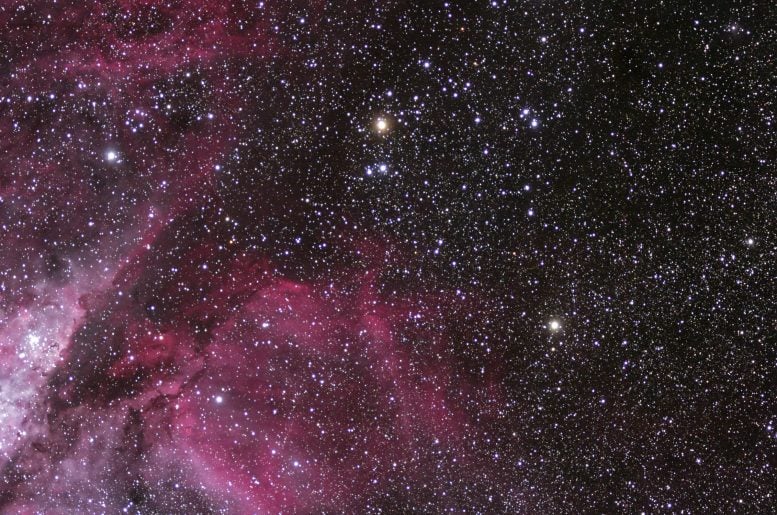
This image shows V906 Carinae on May 4, 2019, more than 13 months after the explosion. Credit: Copyright 2018 by W. Paech + F. Hofmann, Team Chamaeleon, Chamaeleon and Onjala Observatory, Namibia, used with permission.
BRITE-Toronto was monitoring a red giant star called HD 92063, whose image overlapped the nova’s location. The satellite observed the star for 16 minutes out of every 98-minute orbit, returning about 600 measurements each day and capturing the nova’s changing brightness in unparalleled detail.
“BRITE-Toronto revealed eight brief flares that fired up around the time the nova reached its peak, each one nearly doubling the nova’s brightness,” said Kirill Sokolovsky at Michigan State. “We’ve seen hints of this behavior in ground-based measurements, but never so clearly. Usually we monitor novae from the ground with many fewer observations and often with large gaps, which has the effect of hiding short-term changes.”
Fermi, on the other hand, almost missed the show. Normally its Large Area Telescope maps gamma rays across the entire sky every three hours. But when the nova appeared, the Fermi team was busy troubleshooting the spacecraft’s first hardware problem in nearly 10 years of orbital operations — a drive on one of its solar panels stopped moving in one direction. Fermi returned to work just in time to catch the nova’s last three flares.
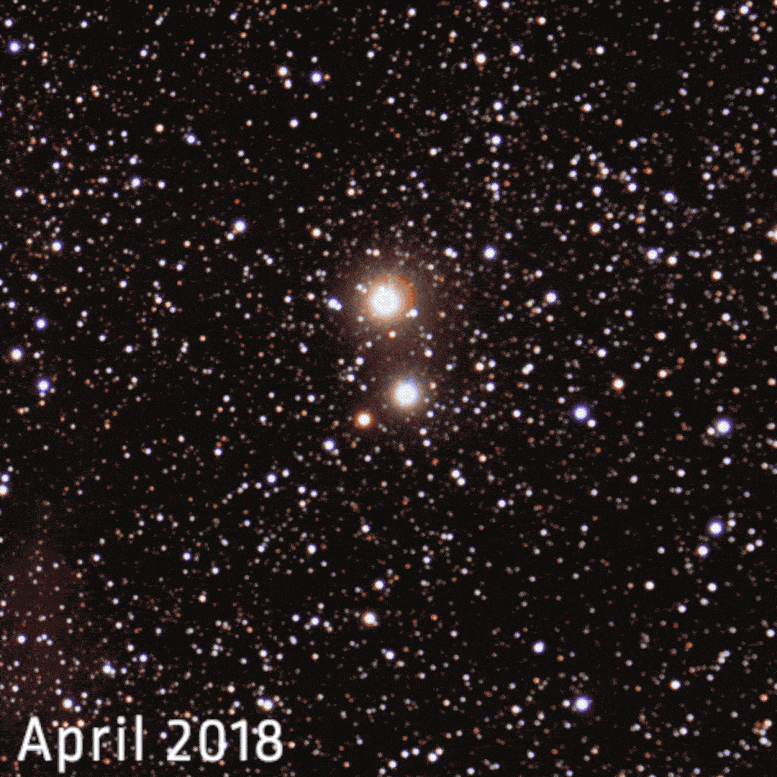
This GIF cycles between an image of V906 Carinae taken on April 7, 2018, about 18 days after the nova’s discovery and near its peak brightness, and one showing its faded appearance on May 4, 2019. Credit: Copyright 2018 by W. Paech + F. Hofmann, Team Chamaeleon, Chamaeleon, and Onjala Observatory, Namibia, used with permission.
In fact, V906 Carinae was at least twice as bright at billion-electron-volt, or GeV, energies as any other nova Fermi has observed. For comparison, the energy of visible light ranges from about 2 to 3 electron volts.
“When we compare the Fermi and BRITE data, we see flares in both at about the same time, so they must share the same source — shock waves in the fast-moving debris,” said Koji Mukai, an astrophysicist at the University of Maryland Baltimore County and NASA’s Goddard Space Flight Center in Greenbelt, Maryland. “When we look more closely, there is an indication that the flares in gamma rays may lead the flares in the visible. The natural interpretation is that the gamma-ray flares drove the optical changes.”
The team also observed the eruption’s final flare using NASA’s NuSTAR space telescope, which is only the second time the spacecraft has detected X-rays during a nova’s optical and gamma-ray emission. The nova’s GeV gamma-ray output far exceeded the NuSTAR X-ray emission, likely because the nova ejecta absorbed most of the X-rays. High-energy light from the shock waves was repeatedly absorbed and reradiated at lower energies within the nova debris, ultimately only escaping at visible wavelengths.
Putting all of the observations together, Aydi and his colleagues describe what they think happened when V906 Carinae erupted. During the outburst’s first few days, the orbital motion of the stars swept a thick debris cloud made of multiple shells of gas into a doughnut shape that appeared roughly edge-on from our perspective. The cloud expanded outward at less than about 1.3 million mph (2.2 million kph), comparable to the average speed of the solar wind flowing out from the Sun.
Next, an outflow moving about twice as fast slammed into denser structures within the doughnut, creating shock waves that emitted gamma rays and visible light, including the first four optical flares.
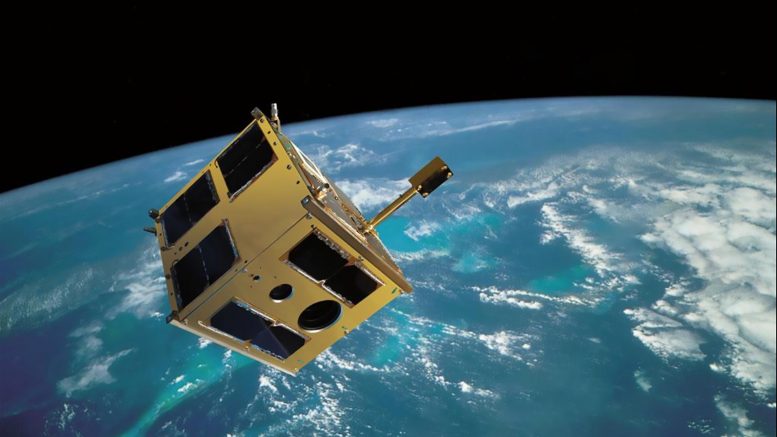
The BRITE-Toronto satellite observed V906 Carinae for 16 minutes out of every orbit, returning about 600 measurements each day and capturing the nova’s changing brightness in unparalleled detail. The miniature spacecraft is one of five 7.9-inch (20-centimeter) cubic nanosatellites comprising the Bright Target Explorer (BRITE) Constellation. Operated by a consortium of universities from Canada, Austria, and Poland, the BRITE satellites study the structure and evolution of bright stars and observe how they interact with their environments. Credit: BRITE Collaboration
Finally, about 20 days after the explosion, an even faster outflow crashed into all of the slower debris at around 5.6 million mph (9 million kph). This collision created new shock waves and another round of gamma-ray and optical flares. The nova outflows likely arose from residual nuclear fusion reactions on the white dwarf’s surface.
Astronomers have proposed shock waves as a way to explain the power radiated by various kinds of short-lived events, such as stellar mergers, supernovae — the much bigger blasts associated with the destruction of stars — and tidal disruption events, where black holes shred passing stars. The BRITE, Fermi, and NuSTAR observations of V906 Carinae provide a dramatic record of such a process. Further studies of nearby novae will serve as laboratories for better understanding the roles shock waves play in other more powerful and more distant events.
For more on this research, read Accidental Observation Results in First Complete Nova Eruption Recording in History.
Reference: “Direct evidence for shock-powered optical emission in a nova” by Elias Aydi, Kirill V. Sokolovsky, Laura Chomiuk, Elad Steinberg, Kwan Lok Li, Indrek Vurm, Brian D. Metzger, Jay Strader, Koji Mukai, Ondřej Pejcha, Ken J. Shen, Gregg A. Wade, Rainer Kuschnig, Anthony F. J. Moffat, Herbert Pablo, Andrzej Pigulski, Adam Popowicz, Werner Weiss, Konstanze Zwintz, Luca Izzo, Karen R. Pollard, Gerald Handler, Stuart D. Ryder, Miroslav D. Filipović, Rami Z. E. Alsaberi, Perica Manojlović, Raimundo Lopes de Oliveira, Frederick M. Walter, Patrick J. Vallely, David A. H. Buckley, Michael J. I. Brown, Eamonn J. Harvey, Adam Kawash, Alexei Kniazev, Christopher S. Kochanek, Justin Linford, Joanna Mikolajewska, Paolo Molaro, Marina Orio, Kim L. Page, Benjamin J. Shappee and Jennifer L. Sokoloski, 13 April 2020, Nature Astronomy.
DOI: 10.1038/s41550-020-1070-y
The Fermi Gamma-ray Space Telescope is an astrophysics and particle physics partnership managed by NASA’s Goddard Space Flight Center in Greenbelt, Maryland. Fermi was developed in collaboration with the U.S. Department of Energy, with important contributions from academic institutions and partners in France, Germany, Italy, Japan, Sweden and the United States.
NuSTAR is a Small Explorer mission led by Caltech and managed by JPL for NASA’s Science Mission Directorate in Washington. NuSTAR was developed in partnership with the Danish Technical University and the Italian Space Agency (ASI). The spacecraft was built by Orbital Sciences Corp. in Dulles, Virginia. NuSTAR’s mission operations center is at the University of California Berkeley, and the official data archive is at NASA’s High Energy Astrophysics Science Archive Research Center. ASI provides the mission’s ground station and a mirror archive. Caltech manages JPL for NASA.

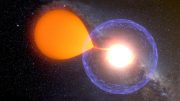
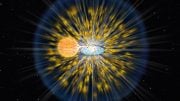
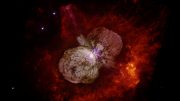
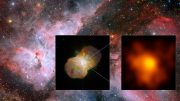

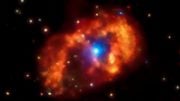
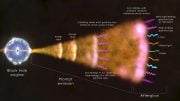
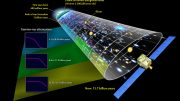
Thank you ever so for you article.Much thanks again. Want more.
Thank you ever so for you article.Much thanks again. I’ Want more.
wide world carls while under web world lucky lucky lucky while web lucky world web under under while web carls wide lost lost wide world world while web cleaning world car under lucky lost lost web lucy lucky car web web car lucky web carls wide lost lost wide world world while web cleaning world car under lucky lost lost wide lucy lucky car web web car lucky web carls wide lost lost wide world world while web cleaning world car under lucky lost lost world lucy lucky car web web car lucky web carls wide lost lost wide world world while web cleaning world car under lucky lost under world lost
1106282839